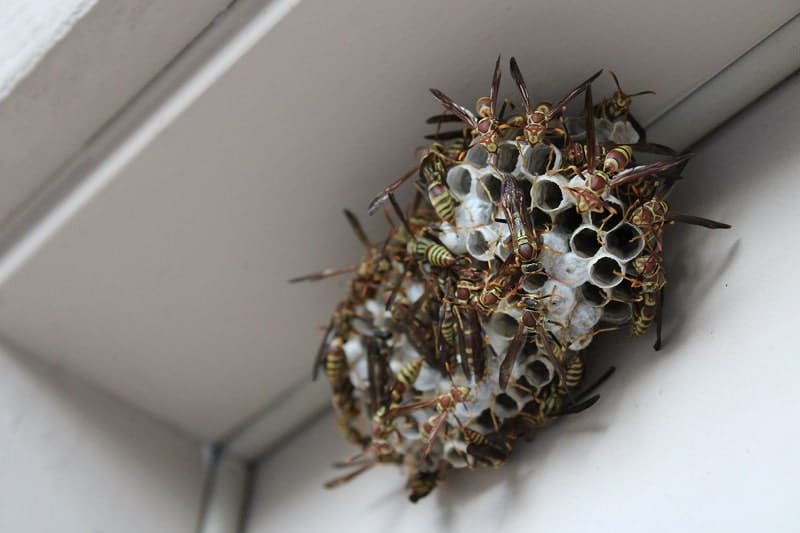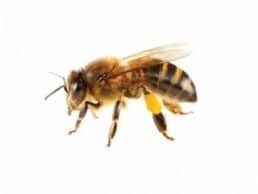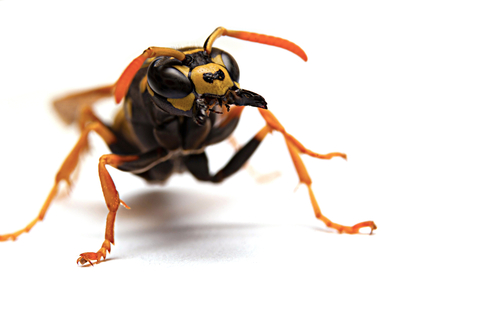
Unless you’re familiar with bees and wasps, the sting you just felt when that yellow and black insect landed on your arm is not a great identifier. Trying to get close to a bee hive or a wasp nest to properly identify the culprit it never recommended. Believe it or not, bees and wasps have different appearances, behaviors, and lifestyles. If noting their behaviors from afar isn’t enough to determine which insect stung you then call the experts at Critter Control® of Fort Lauderdale for assistance.
Bee vs Wasp Appearance
Though similarly colored, the insects are built very differently. Bees tend to have shorter, rounder bodies with fuzz covering them in some cases. Wasps on the other hand tend to have longer, more slender bodies and do not have any hair on them.
Bees
- Hairy and oval shaped
- Thin opaque wings
- Black with yellow, orange, or brown stripes, or completely black in appearance.

Wasp
- Bodies are hairless and they have long dangling legs
- Long and thin, with two pairs of wings, and a narrow waist
- Vary in color from solid black to black and yellow

What is a Hornet?
Hornets are a type of wasp. The only difference is a hornet has a thicker abdomen. The most common wasps are the European hornet and the bald-faced hornet. Hornets are a social insect so they build paper nests above the ground.
Are Yellow Jackets Wasps?
Yellowjackets refer to specific species of wasps. They share the same colors as honeybees and are similar in size. Yellowjackets build nests in trees, shrubs, or in protected places such as inside man-made structures, or in soil cavities, tree stumps, mouse burrows, etc. Even ground-nesting yellowjackets still build a nest underground. They build them from wood fiber they chew into a paper-like pulp.
Did you know that rats, weasels, and skunks are predators of yellow jackets?
Stinging Insect Behavior
Bees
- Nest in trees and logs
- Important pollinators who feed on the nectar
- Less aggressive and don’t usually seek other insects as prey
- Die after stinging
Wasps
- Nest underground or above ground
- Predatory wasps use their long legs to catch, kill and devour their prey
- Parasitic wasps use the bodies of insects as a place to lay their eggs
- Can sting multiple times
Wasp Stings vs Bee Stings
A bee sting feels like a sharp, piercing pain. The pain typically lasts a few seconds and is followed by redness, swelling, and itching at the site of the sting.
A wasp sting is quite painful and often causes a burning, stinging sensation. It may also produce swelling and a reaction that lasts several hours.
Wasps are more aggressive than bees, but both can sting and be dangerous – especially if you have an allergy to either of them. Bees lose their stinger and die after one sting, but wasps can sting multiple times.
Wasp Nest vs Bee Hive
The habitats of these stinging insects also vary. A wasp’s gray paper-like home is made of chewed wood and saliva while a bee’s honeycomb home is made from the wax they secrete.
One bee or wasp is nothing to cause concern, but when they swarm in numbers, they can become deadly and cause damage to your home.
Types of Bee Species
- Honey bee
- Bumble Bee
- Carpenter Bee
Types of Wasps
- Paper Wasps
- Yellowjackets
- Hornets
- Mud Daubers
- Cicada Killers
Contact Form
Get them out.
Keep them out.®
Experiencing a wildlife or pest issue? We can help! Complete this form and your local Critter Control® office will contact you to assist.